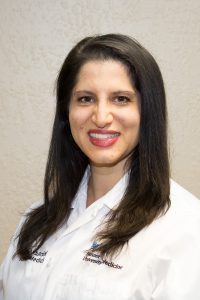About the Author
 Sommer Aldulaimi, MD, FAAFP is a Family Medicine Physician practicing full-spectrum medicine in South Tucson, AZ. She also serves as Associate Program Director of the Family Medicine Residency and Co-Director of the Global Health Track at Banner University Medical Center South Campus. Her passion for providing quality healthcare in underserved areas both domestically and abroad is evident in her interactions with her patients. Dr. Aldulaimi works to bridge the protection gap for refugees and migrants to the USA in Southern Arizona and helps refugees to rebuild their lives in safety and dignity.
Sommer Aldulaimi, MD, FAAFP is a Family Medicine Physician practicing full-spectrum medicine in South Tucson, AZ. She also serves as Associate Program Director of the Family Medicine Residency and Co-Director of the Global Health Track at Banner University Medical Center South Campus. Her passion for providing quality healthcare in underserved areas both domestically and abroad is evident in her interactions with her patients. Dr. Aldulaimi works to bridge the protection gap for refugees and migrants to the USA in Southern Arizona and helps refugees to rebuild their lives in safety and dignity.
Can you tell us what made you decide to work with underserved populations?
I am a child of immigrants from the Middle East and I grew up speaking Arabic at home. I knew I wanted to be a doctor from a very young age, and I knew I wanted to help the most vulnerable in our population. Maybe it was because I understood the struggles that people face when coming to this country not being able to speak the language. Maybe it was because my parents endured several health issues which could have been easily addressed if only they could afford medical care. Maybe it is just part of my DNA.
How would you describe your first experience with a Middle Eastern native?
I was on my 3rd year OB rotation and was called urgently to the clinic to help interpret for an Arabic speaking Iraqi female refugee who came to the US within the last couple of months. They were having trouble finding an interpreter by phone and needed to get consent for her vaccines. This was the first time I had used my Arabic at work. I came into the room and introduced myself. Tears came to her eyes as she heard me speak. “You speak Arabic??” She was overwhelmed to hear someone speak her native language at the hospital.
We talked for a little while. She had witnessed her husband and brother being killed and had been separated from the rest of her family. She was here alone. I was in awe at how much she opened up to me since I was just a student at the time. Then it was time for her vaccine. “This is going to hurt a little bit”, I said to her. She turned to me and said words I will never forget, “it can’t possibly hurt as much as what I have been through already”. It was my turn to shed tears. I wanted to do so much more to help this woman. I wanted to have a longitudinal relationship with her, but as a student, I was moving on to another rotation the next day.
What are some of the common challenges faced by refugees?
A refugee is a person who cannot return to their home country for fear of persecution. Their journeys are often marked by trauma most of us could never imagine, and when they get to America, things are hard and complicated here as well. The language rules make no sense, their sense of community is lost, things are very expensive, and our healthcare system is difficult to navigate, even as a physician! Being here, especially in the beginning, worsens the trauma further. But, refugees are also some of the most resilient and beautiful people I have ever met, who work hard and sacrifice to give their children a better life in the “land of opportunity” (as my parents did so I could get to where I am today).
How has your career been influenced by your experiences with underserved populations in Southern Arizona?
During medical school, I had many more encounters like the one above, each one with unique challenges and stories: a pregnant woman whose husband was killed in Iraq by a militia group and was here with her 8 children alone, a man with several injuries from being in an explosion in Syria, a teenager with HIV from a gang-rape in the Congo, and the list goes on. As a student, I never got to see the patients again, and I yearned to do more. These experiences solidified my passion to care for underserved and vulnerable populations, especially refugees.
I decided to peruse family medicine to make the biggest impact in the lives of vulnerable people, and when I was applying to residency programs, I specifically looked for areas with a large population of refugees. I matched at my first choice residency in Tucson where there is a significant number of refugees from all over the world. I started building my clinical practice and as word got around that there was an Arabic-speaking Family Doctor, my number of refugee patients (both Arabic speaking and not) increased. I began to strengthen my expertise in taking care of this special population.
How have you overcome the challenges of being a physician to this special population?
One of my greatest challenges was trying to take care of everything my patients needed in a 20-minute visit. One of our residents working on a refugee health project for her global health distinction had a brilliant idea to take better care of our refugee patients: a multidisciplinary clinic with longer appointments. Another colleague and I were completely on board with this idea! After more than a year of working with the resident and our clinic leadership, the Refugee Clinic finally became a reality.
Our Refugee Clinic serves the most vulnerable and complicated refugee patients twice per month with hour-long appointments. Our medical team comprises of a dedicated nurse, two Attending physicians with expertise in Global and Refugee Health, 2 Resident physicians, a lawyer, medical students, and occasionally, a public health or pharmacy student. In this clinic, we dedicate the time needed to really care for our patients in the way that they deserve. We can help educate them on their medical conditions, dive deeper into their trauma, help them with legal issues if needed, and make sure they know how to access the community resources available to them.
Now part of the Faculty at South Campus, I continue to co-run our global health track and Refugee Clinic. My clinical skills are sharpened, my medical Arabic is much improved, and I have become one of our faculty experts on the care of refugee patients. I am so lucky to get to live my passion. And behind it all is still the girl who wanted to make a difference for one of the most vulnerable patient populations in the US, and I think, one patient at a time, we are.









